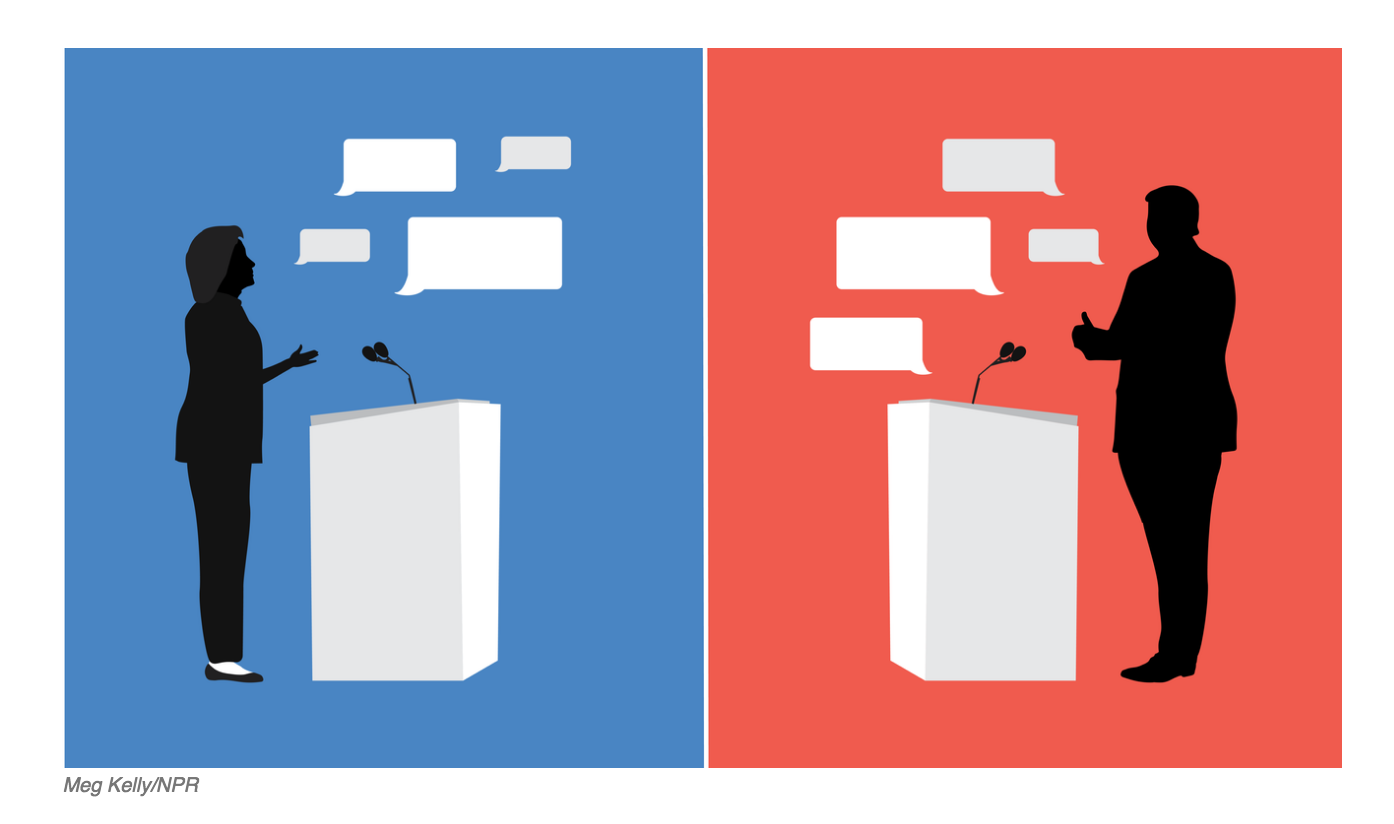As Donald Trump and Hillary Clinton were preparing to debate one another Monday night, NPR reporters and editors flexed their fingers and got to work.
Over the next hour and a half, Clinton and Trump hurled accusations, policy positions and one-liners and at one another. More than once, Clinton asked viewers at home to consult with fact-checkers.
Related: How to Fact-Check Politics and the Media
Apparently, they did just that. As of this morning, at least 6 million people had flocked to a transcript of the debate that was fact-checked by 20 NPR journalists in real-time.
The transcript, which ran more than 40 pages, was an experiment in real-time fact-checking for NPR that was weeks in the making. It proved to be an overwhelming success for the public radio network, drawing 7.4 million pageviews and delivering NPR.org’s its biggest traffic day ever.
The concept of live fact-checking the debates at NPR began germinating shortly after the network finished its coverage of the Republican and Democratic national conventions, said Amita Kelly, a digital editor and producer on NPR’s Washington desk. They’d fact-checked speeches from Clinton and Trump, stories that proved popular with NPR’s audience. So, when it came to the debates, staffers were sure fact-checking would be in the mix once again.
But how would they provide on-the-spot critiques of the debate in real-time? That’s where David Eads came in. Eads, a news applications developer for NPR Visuals, worked on a team of designers and developers to meet the project’s technical needs. On Tuesday, after weeks of preparation, Eads sent out a tweet explaining the team’s handiwork.
transcription service ←→ google app script → google doc (+18 factcheckers) ←→ server → s3 → embedded widgethttps://t.co/Dzt3a0O4rL
— David Eads (@eads) September 27, 2016
Here’s how it all worked: When the debate kicked off at 9 p.m., NPR had a transcription service providing a moment-by-moment transcript of each candidates’ remarks in real-time. Then, a snippet of code read that transcript and dumped it into Google Docs. From there, 20 NPR journalists on a variety of beats annotated the transcript, checking facts and adding context.
Kelly approved the annotations, which were then fed onto a page on NPR.org by a separate piece of code that checked the transcript every 10 seconds. The resulting transcript was embeddable, and multiple NPR member stations, including WNYC, opted to use the fact-check.
The real strength of the project, Kelly said, was the collective brainpower of NPR’s journalists. Reporters from national security and immigration beats brought different expertise to bear on the facts, forming a kind of “hive mind” that was more potent than any one reporter.
“It was a chance for them to convey the knowledge that they all have on their beats anyway,” Kelly said.
Real-time fact-checking has been around for some time; PolitiFact, a project of the Poynter-owned Tampa Bay Times, annotated President Obama’s 2015 State of the Union speech in real-time using Genius. Other news organizations, including Argentina’s Chequeado, have also experimented with the form.
In addition, several other news organizations, including The New York Times, The Washington Post, PolitiFact and FactCheck.org, were also in full fact-checking swing Monday night. Traffic to the three biggest fact-checking projects in the United States have been way up this year, perhaps because of the glut of fact-challenged statements of late.
Given the success of Monday’s experiment, NPR will likely repeat the process with the remaining debates in the presidential election, Eads said. The fact-check saw above-average mobile usage and sky-high time on site (more than nine minutes), which indicates that people opened the article page on their phones and used it as a second screen throughout the debate.
The word-of-mouth response was also encouraging, he said.
“One of the things I saw on Facebook was people calling it ‘political coverage for grown-ups,'” Eads said.
Editor’s note: This story has been updated.






